NEW YORK-The Ghanian-British architect Sir David Adjaye, and his firm Adjaye Associates, has completed the Public Member Spaces of the new headquarters in New York City of the 1199SEIU United Healthcare Workers East, the largest healthcare union in the US. Known for their sensitive and responsive architecture, the firm’s design strongly embodies the principles, ethos and achievements of the 88-year-old union. Conceived out of collaboration with the politically active community of 1199SEIU, the project represents a space of social justice where Martin Luther King Jr. himself attributed the union to “the authentic conscience of the labor movement”.
The Anton Refregier mural that ornamented the original SEIU building, is memorialized with a replica at the entry-level lobby. The mural depicts important times that showcase the milestones in the SEIU’s fight for labor rights, inspiring the consequent rooms in the building.

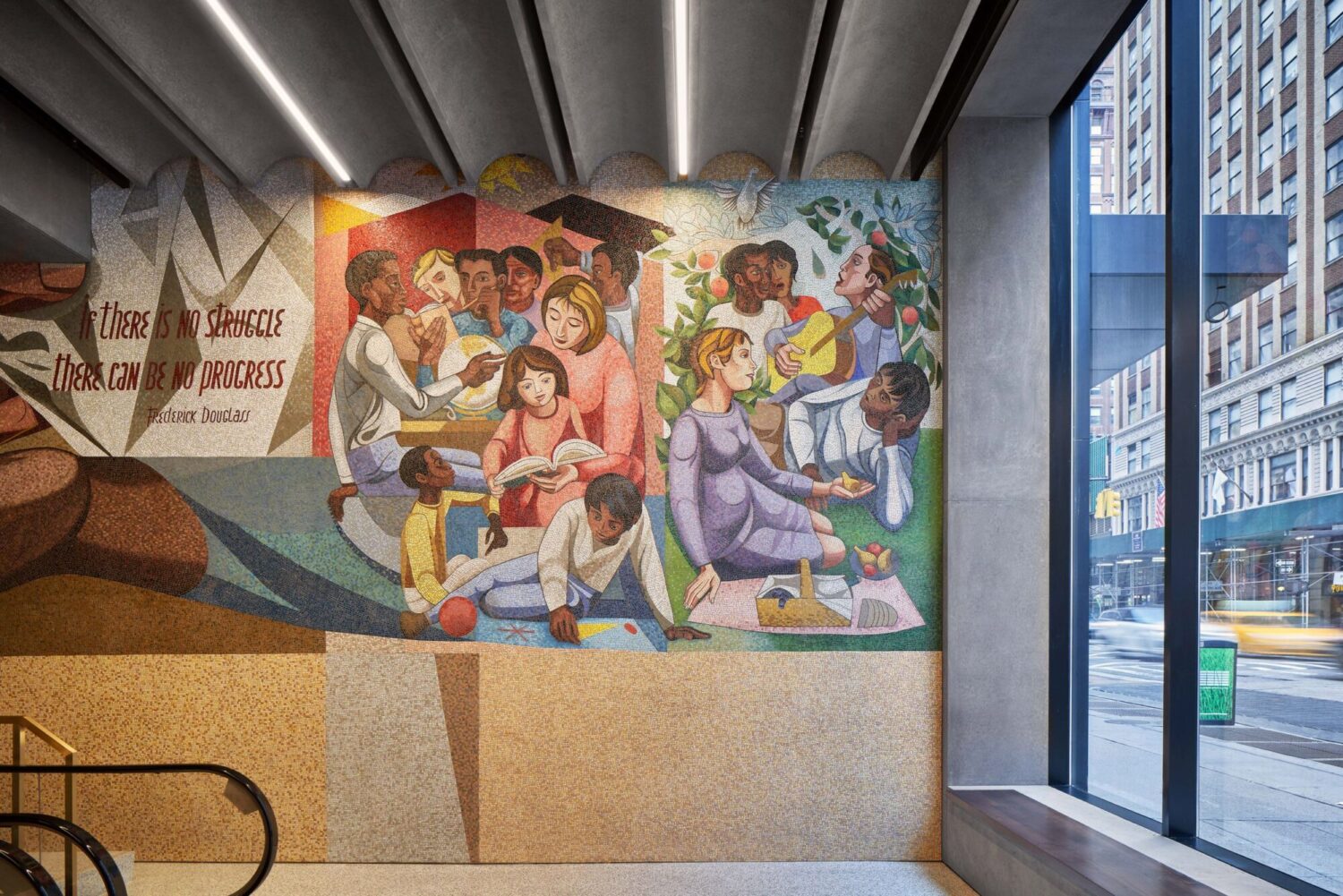

Speaking to the New York Times Adjaye noted:
“The way I usually work is to dive into the history and trajectory of the organization and the physical history”. In examining the King Labor Center he fell for the mural, “It had a power, and was a relic of hope from the 1960s and ’70s.” with its bond to 1199’s aspirations as well as to Refregier’s embrace of the social justice mission in much of 20th-century art.
Refregier was born in Russia in 1905 and immigrated to the United States, where he studied at the Rhode Island School of Design and with the artist Hans Hofmann. He gained notoriety for a set of 27 murals, titled “The History of San Francisco,” which he painted in the lobby of a post office. It drew ire from fear-mongering anti-communists for portraying some of the city’s worst excesses, including an image of a white man beating a defenseless Chinese laborer during anti-Chinese riots. The work is now a protected landmark.
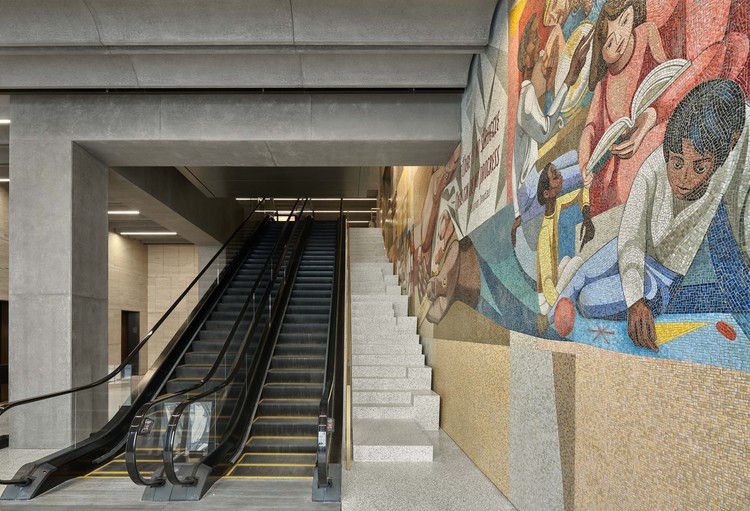
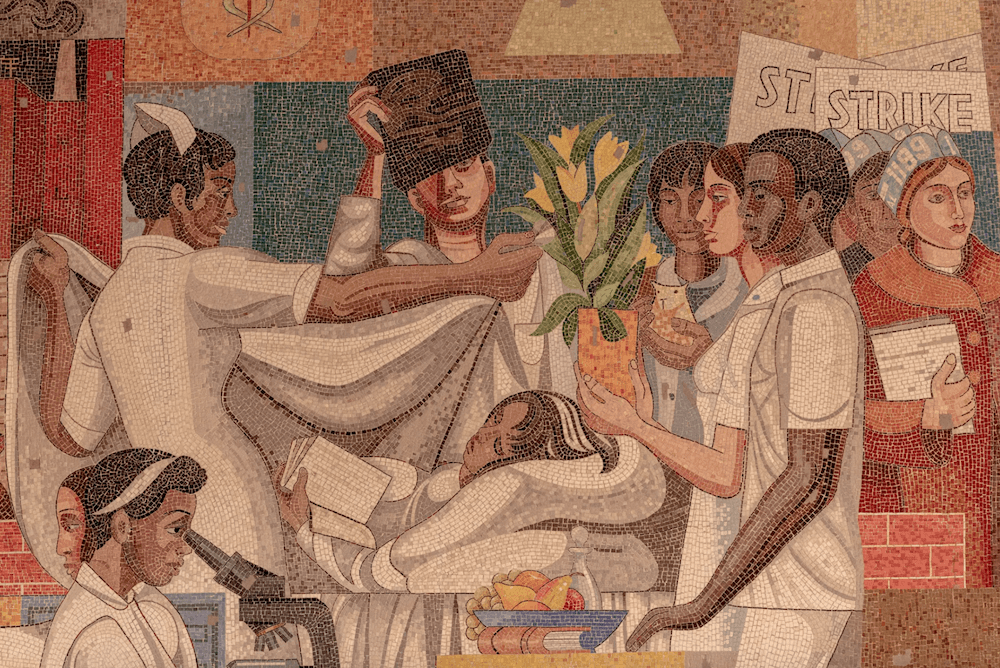
The original mural was mounted on a cement block wall and its fragility and scale made moving it impossible, so Adjaye commissioned a replica. Stephen Miotto, a glass artisan based in Carmel, was consulted. He recognized the work immediately because he had taken over the studio of his godfather, Carlo Rett, who created the original work with his two partners. His Miotto Mosaic Art Studios, working with partners in Spilimbergo, Italy, used similar techniques and much of the same glass tiles that Rett had used.
The New York Times explained that reproducing the mural unlocked for Adjaye an idea for bringing the rich history of the union into the new headquarters using similarly monumental form. The Union had shared Adjaye a trove of photos with Adjaye from the union’s history of hard-fought battles to improve the lot of members:
Instead of framing them and hanging them on the wall, Adjaye decided to turn the photographs into large-scale artworks — at floor-to-ceiling mural scale. He knew of the tile factory Cerámica Suro, in Guadalajara, Mexico, which has frequently worked with renowned artists, and asked its owner, José Noé Suro, to reproduce those 80 photos in tile at the desired scaleby digitizing the images and transferring them to the glaze on two-inch square tiles.







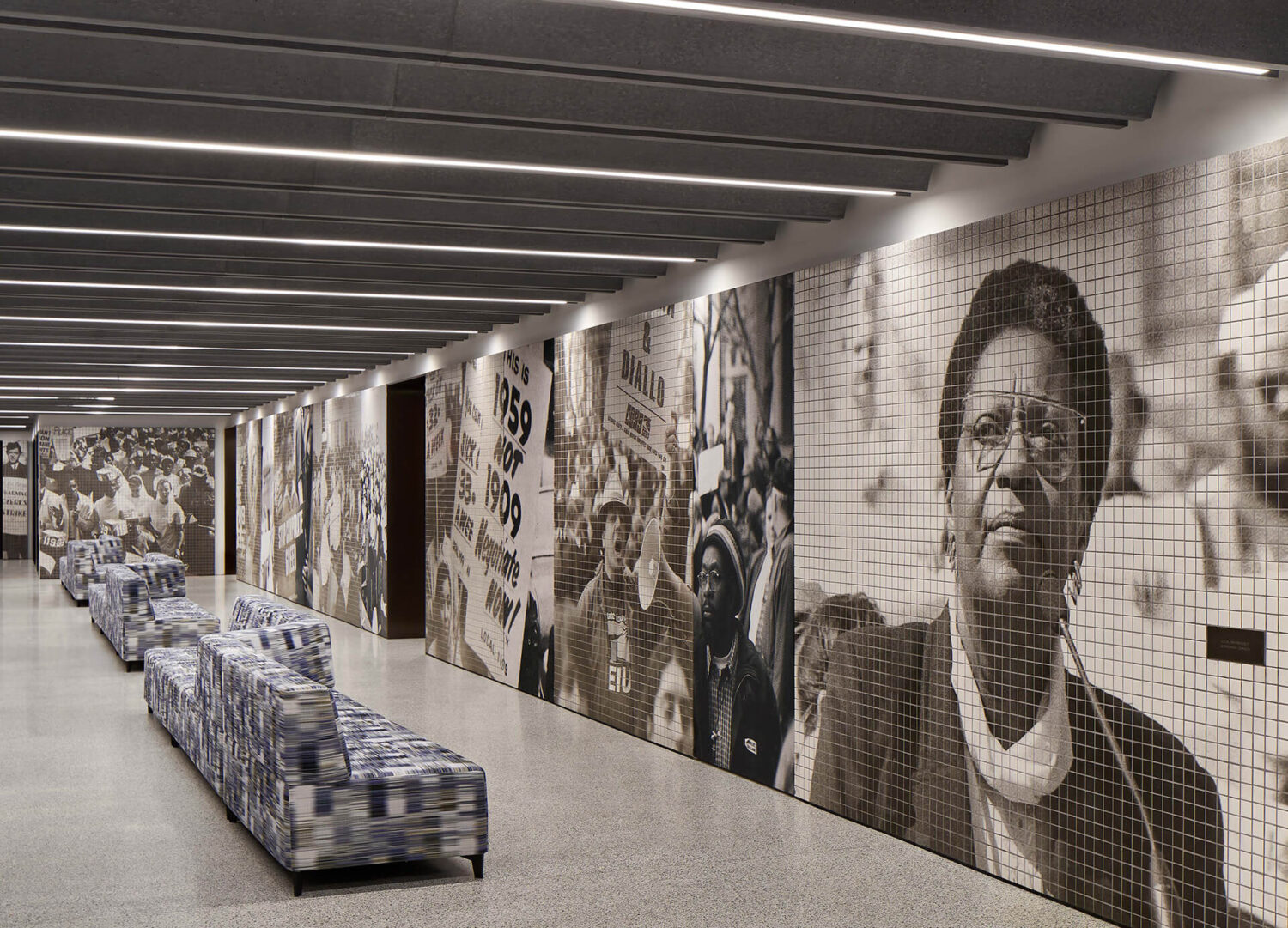
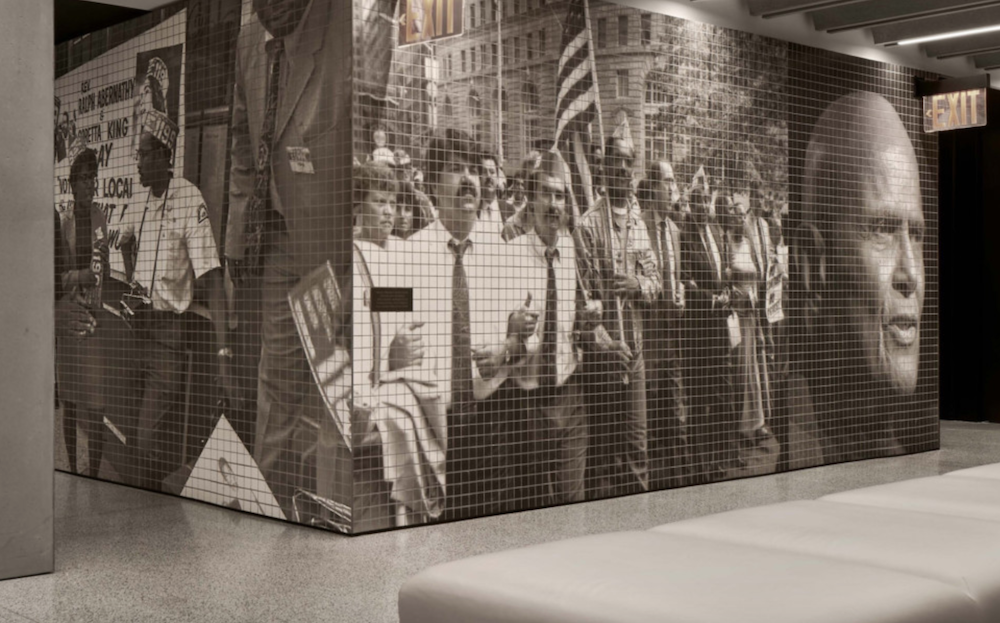
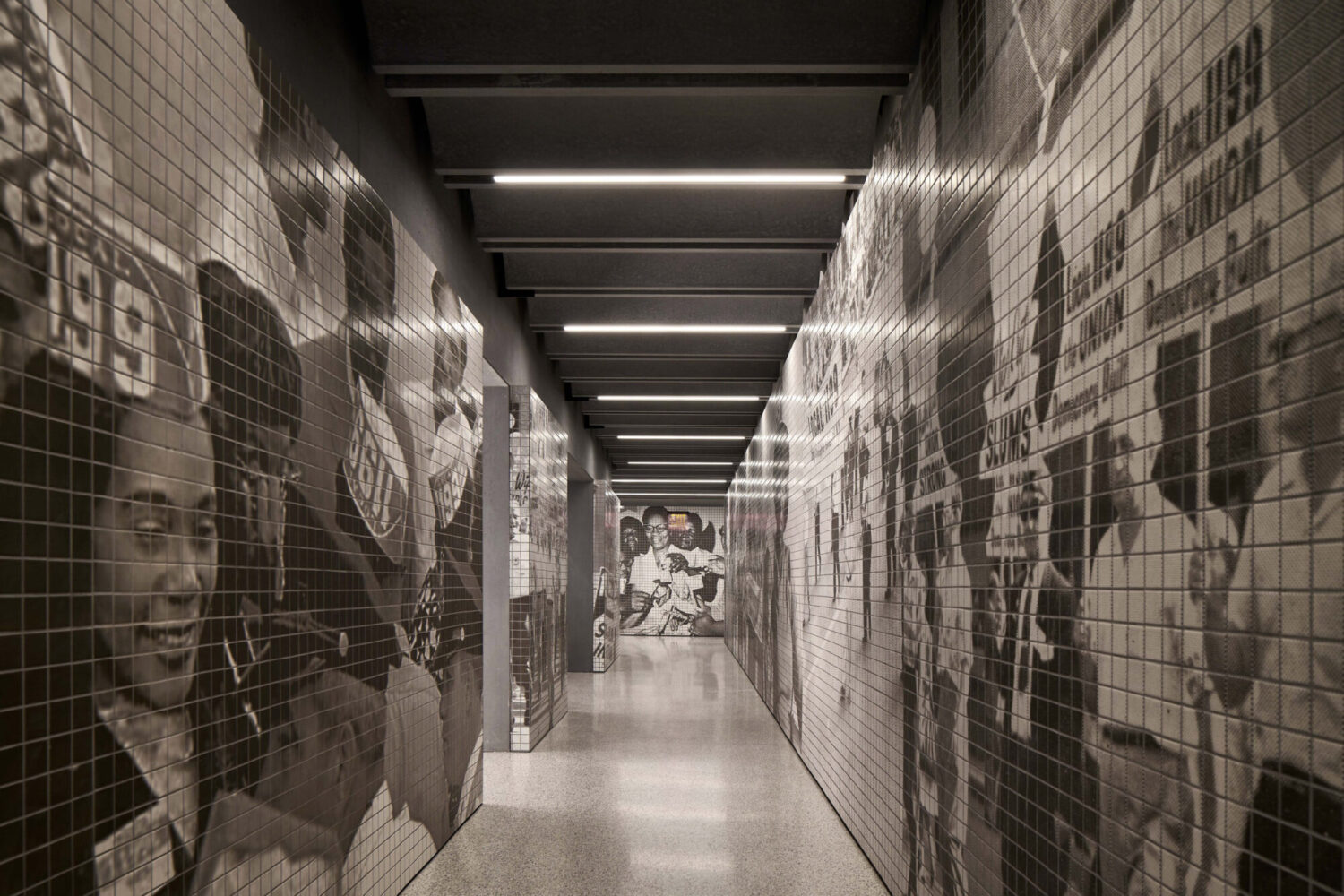
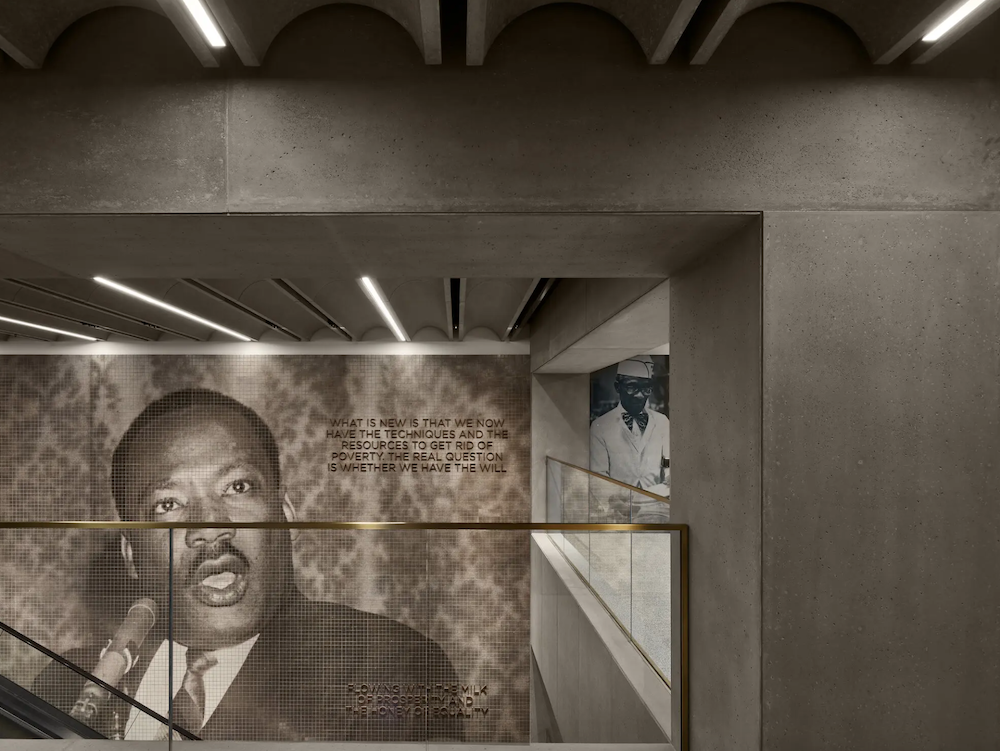
“We were commissioned to work on what the public floors would be like for members and new people coming in. I wanted to unfold this incredible story of the SEIU throughout the public space as a kind of permanent gallery of where the history has gotten to,” says Adjaye.
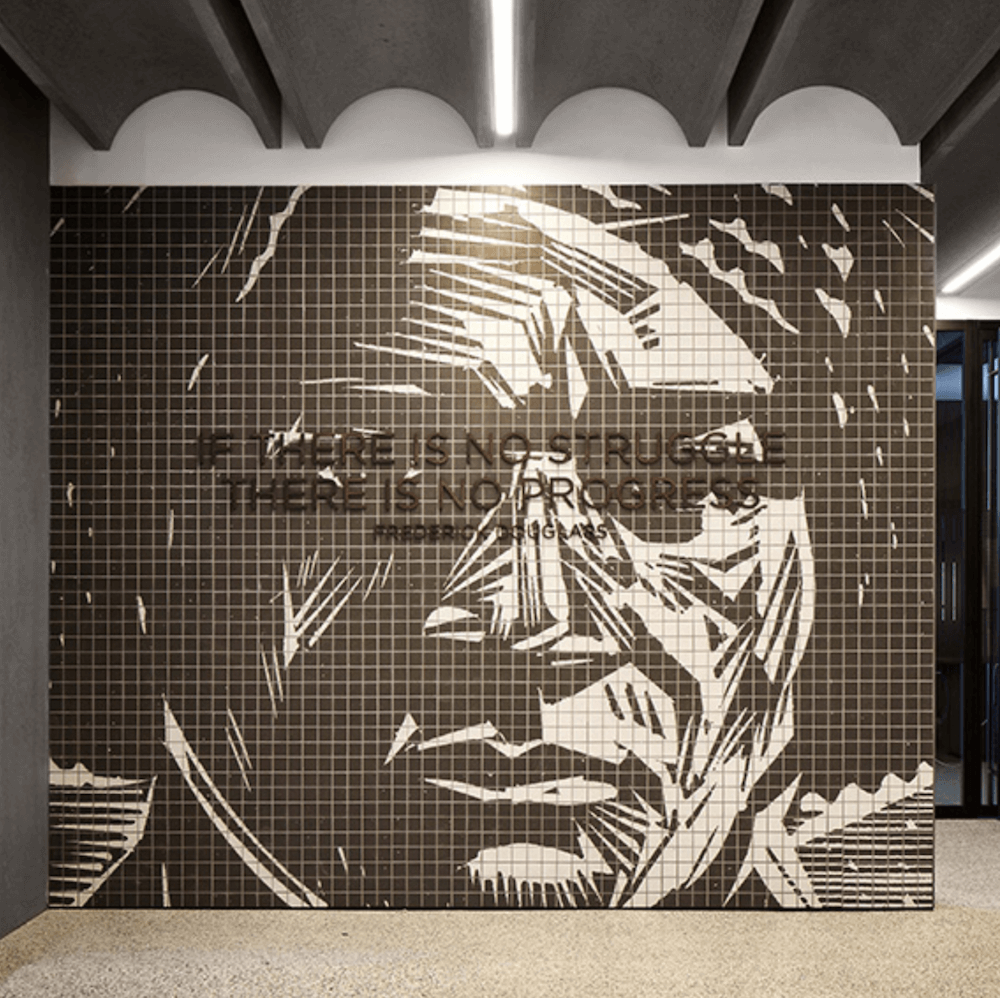
Add your valued opinion to this post.